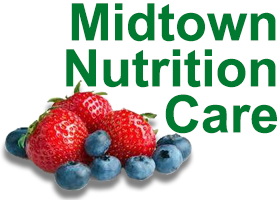BONE HEALTH
54 million Americans have osteoporosis (weak bones) or osteopenia (lower than normal bone size). One in two women and one in four men over 50 years old may break a bone due to osteoporosis.
WHAT CAUSES OSTEOPOROSIS?
Weakened bones occur when the body loses too much bone, does not make enough new bone, or both. As a result, bones lose density and may break from a fall, or, in severe cases, from minor bumps or even from sneezing.
We build up bone density until the age of 30, then begin to lose density. For women, bone is lost even faster after menopause. Therefore, the goal is to build as much bone as possible when young and lose as little as possible when older.
RISK FACTORS
Risk Factors for bone loss are poor diet, underweight, long-term medications like steroids, celiac disease, autoimmune or malabsorption diseases, weight loss surgery, smoking, and excess alcohol consumption. Family history also is a factor.
WHAT ARE THE SYMPTOMS OF OSTEOPOROSIS?
Osteoporosis and Osteopenia are silent diseases, and one generally does not feel any pain until a bone breaks. For that reason, bone density scans are recommended for people over 65, or younger if there are significant Risk Factors.
HOW TO REDUCE THE RISK FOR OSTEOPOROSIS
The best way to reduce risk is to start in childhood with a balanced diet that includes recommended amounts of calcium and Vitamin D. Calcium rich foods include milk, yogurt, green leafy vegetables and foods with added calcium.
CALCIUM AND VITAMIN D RECOMMENDATIONS
–Daily amounts for men and women under 50 years old are 1000 mg of calcium and 400-800 IU of Vitamin D.
–Daily amounts for women over 50 are 1200 mg of calcium and 800-1000 IU of Vitamin D.
–Daily amounts for men 50-70 are 1000 mg of calcium and 800-1000 IU of Vitamin D.
–Daily amounts for men over 70 are 1200 mg of calcium and 800-1000 IU of Vitamin D.
FOR MORE INFORMATION
For more information visit the Bone Health & Osteoporosis Foundation website, www.nof.org
